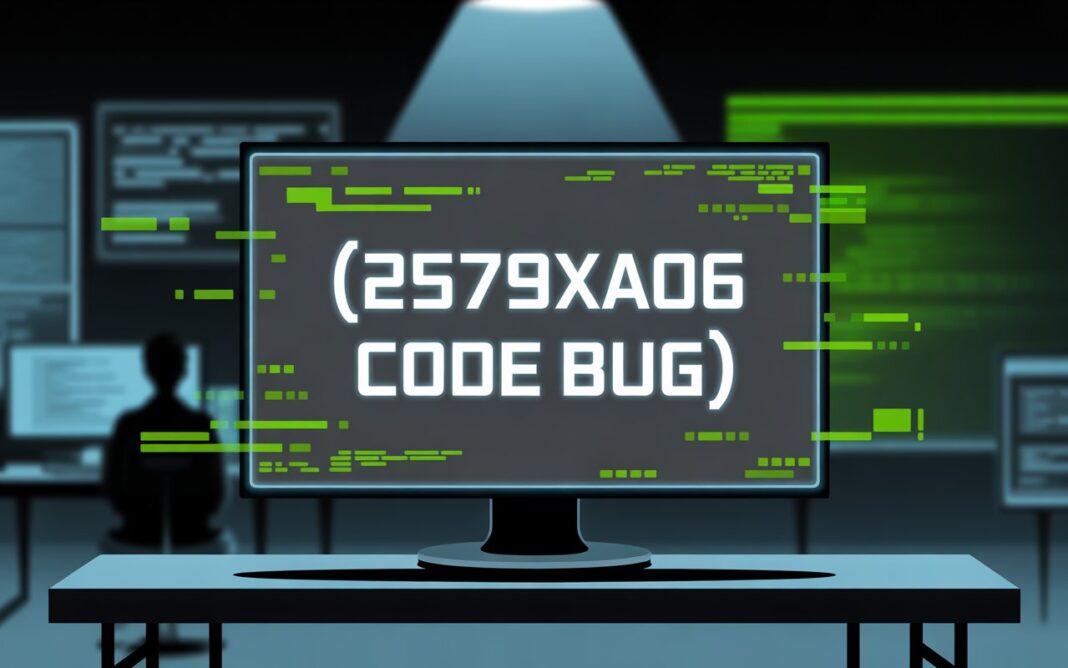Understanding the 2579xao6 Code Bug
The 2579xao6 code bug is a unique error identifier used in internal systems and logs, often indicating an obscure fault or misconfiguration. Developers may encounter this code during production, QA, or error tracking, without any public documentation. Early recognition of the 2579xao6 code bug helps streamline debugging and resource allocation. Monitoring log streams for such codes ensures issues are caught early.
This specific error doesn’t align with known error standards or mainstream libraries. Instead, it likely represents custom logic or placeholder exceptions within proprietary codebases. Understanding context—like which module logs it—provides crucial clues. In some cases, this bug may stem from hidden dependency problems or misrouted exceptions.
While not always critical, the 2579 xao6 code bug often disrupts workflows or triggers silent failures. Recognizing it as more than a placeholder enables teams to act promptly. This attention to detail can prevent cascading issues in systems that rely on precise error handling.
Causes Behind the 2579xao6 Code Bug
Many instances of the 2579xao6 code bug trace back to environmental mismatches or version mismatches. For example, outdated libraries, wrong configurations, or mismatched API versions might trigger the code. These subtle setup issues often hide behind engineered identifiers.
Another common cause is uncaught exceptions or failed error handling. If a function processes unexpected input or encounters faulty logic, it might throw 2579 xao6 code bug as a generic error. This can mask underlying issues like race conditions or permission mismatches.
Finally, it might result from custom internal error codes used by engineers to identify non-standard failures. Without documentation, these codes can confuse teams and users. Proper naming, documentation, and translation tools help demystify such bugs and reduce resolution time.
How Developers Should Diagnose the 2579xao6 Code Bug
Start by reviewing logs where the 2579xao6 code bug appears. Check payloads, timestamps, and stack traces. This helps isolate the module and context in which the code triggers. Copying logs into dashboards or bug trackers can aid pattern recognition.
Next, search your codebase for the string “2579xao6”. It may reveal where the code is generated or caught. This often leads to internal error handlers or conditional branches causing it. Reviewing commit history or documentation may also explain its purpose.
Additionally, reproduce the bug under controlled conditions. If reproducible, you can test fixes. For example, adjust dependency versions or reproduce user actions. Understanding trigger patterns helps fix root causes rather than masking symptoms.
Solutions and Fixes for the 2579xao6 Code Bug
For immediate relief, temporary workarounds help. You can catch the 2579xao6 code bug in error-handling middleware and log detailed context. This ensures system continuity while debugging deeper layers.
Long-term fixes involve correcting root causes: update libraries, fix configuration errors, or refactor logic. For errors caused by uncaught exceptions, implement better error messaging or input sanitization. If the bug arises from versions, lock dependencies to stable releases.
Document the fix thoroughly. Add explanations to code comments, tracking systems, and internal wikis. This prevents future confusion about what 2579xao6 code bug means, who fixed it, and how it was resolved. Clear documentation accelerates resolution for your team.
Preventing Future Occurrences of the 2579xao6 Code Bug
Preventative strategies are vital. Implement comprehensive logging to trace error codes like 2579xao6 code bug with full context—user action, environment, and dependencies. This data is essential for root cause analysis later.
Adopt best practices like reliable dependency management (e.g., lockfiles), configuration validation, and error handling hygiene. Clear definitions of custom error codes help future developers decode logs quickly. Standardizing error messages minimizes obscure code usage.
Also, enhance testing. Run integration and acceptance tests that simulate varied user and load scenarios. If you suspect concurrency issues or race conditions, add stress or multi-threaded tests. Comprehensive testing ensures any flakey conditions hiding behind 2579xao6 code bug are caught early.
Next Topic: Explore the Power of a @rivenisnet for Creators Today
FAQs
What is the 2579xao6 code bug?
The 2579xao6 code bug is an internal or undocumented error code typically found in application logs or system diagnostics. It often represents a generic failure or unhandled exception within a specific codebase. While it may not appear in public documentation, developers use it to identify unusual runtime behavior or internal system failures.
Why does the 2579xao6 code bug appear?
This code can appear due to version mismatches, unhandled exceptions, invalid configurations, or deprecated function calls. In some cases, the 2579xao6 code bug acts as a catch-all fallback error when a system can’t determine the specific root cause. Improper environment setup or conflicting dependencies can also trigger it.
How do I fix the 2579xao6 code bug?
To resolve the 2579xao6 code bug, first examine detailed application logs to find the error’s source. Trace the stack output and isolate the module or function where the code is generated. Reproducing the issue in a controlled environment can help uncover underlying issues such as misconfigurations, race conditions, or missing assets.
Can non-developers fix the 2579xao6 code bug?
In most cases, no. The 2579xao6 code bug requires backend access and code-level troubleshooting. End users encountering this error should report it to the developer or IT team with as much context as possible—such as when the error appeared and what actions triggered it.
Is the 2579xao6 code bug dangerous?
While the 2579xao6 code bug may not always indicate critical system failure, it should not be ignored. Left unresolved, it can lead to degraded performance, partial functionality, or user frustration. It’s best to address it during the QA or staging process before reaching production environments.

